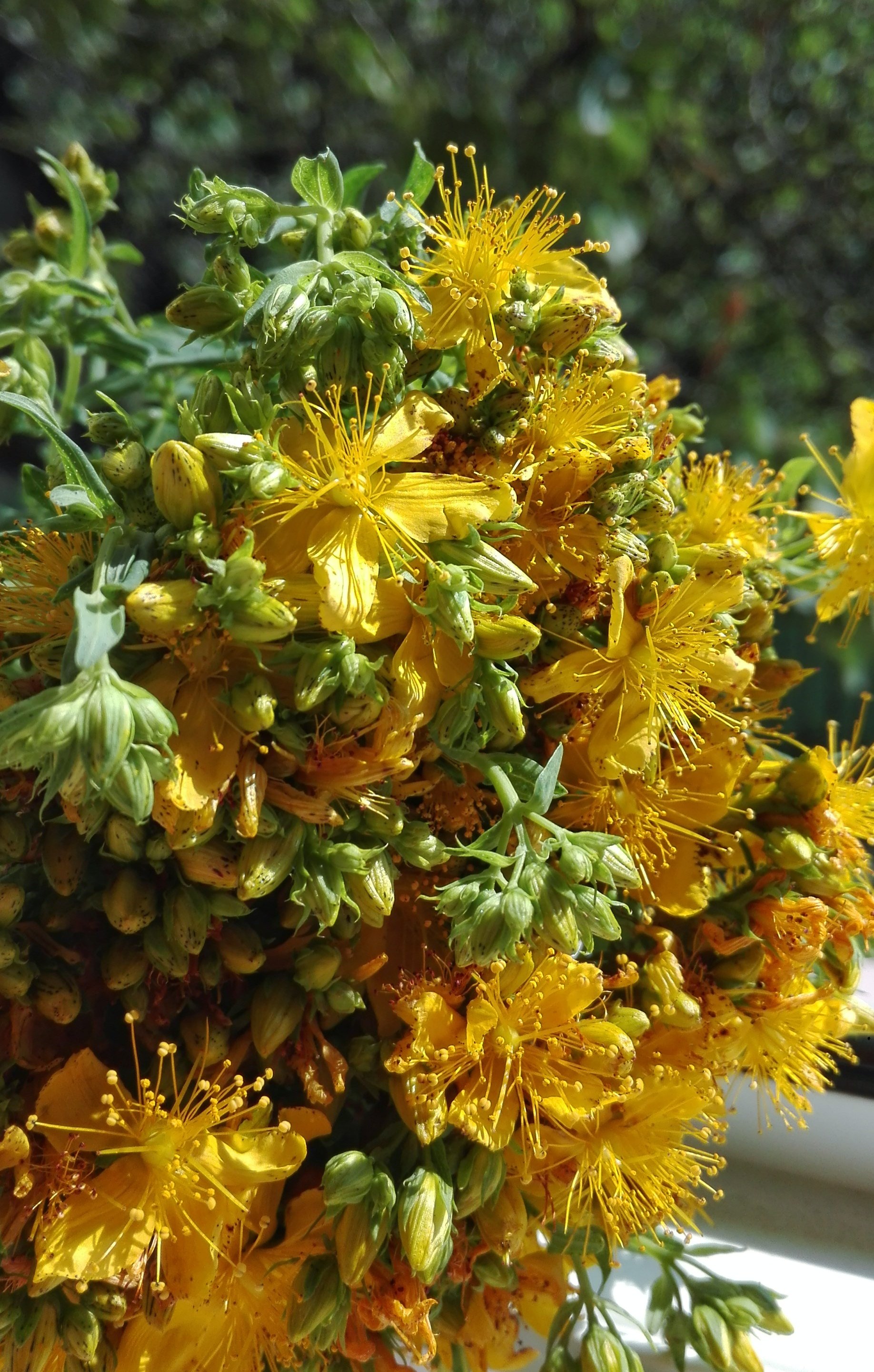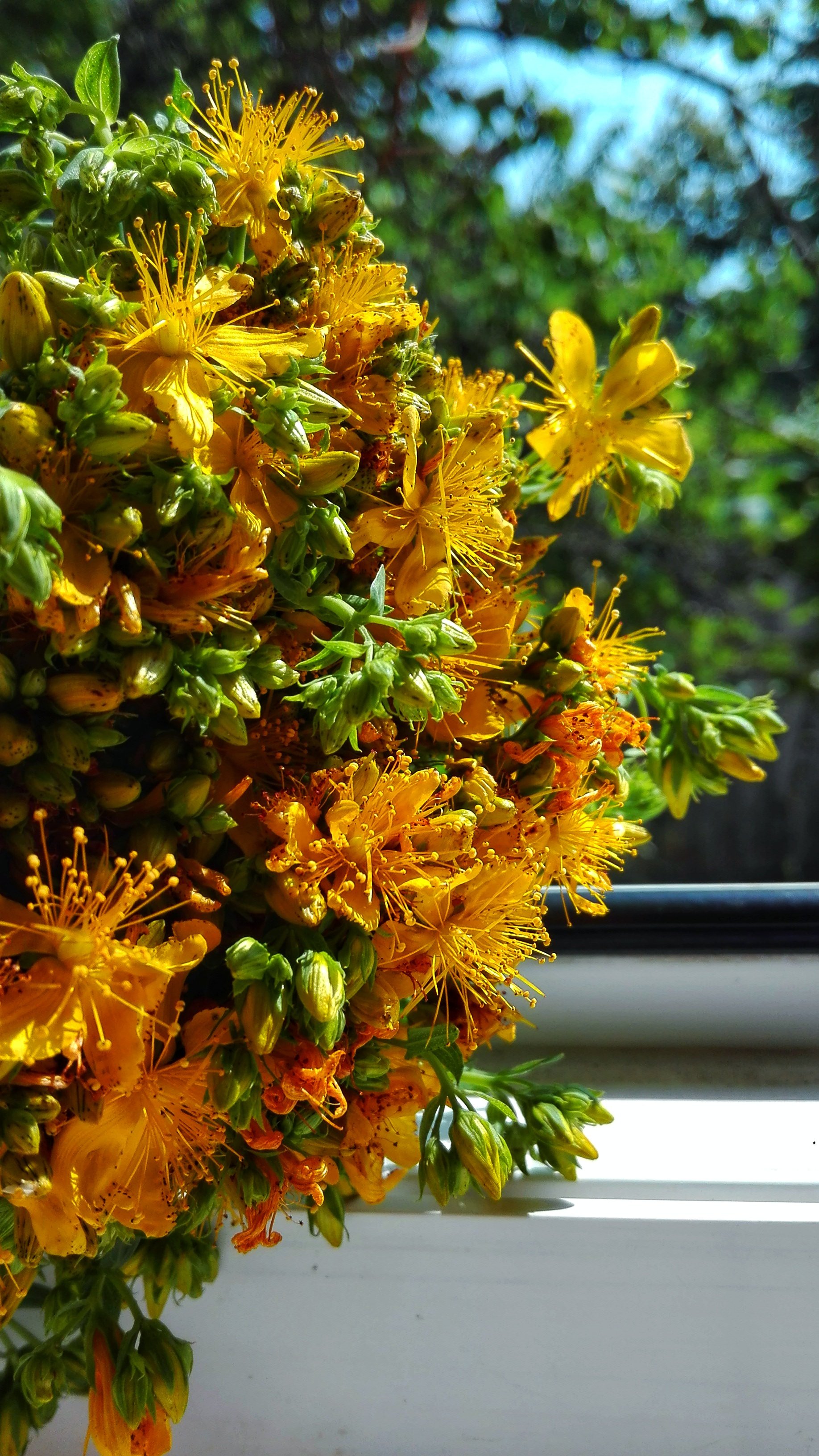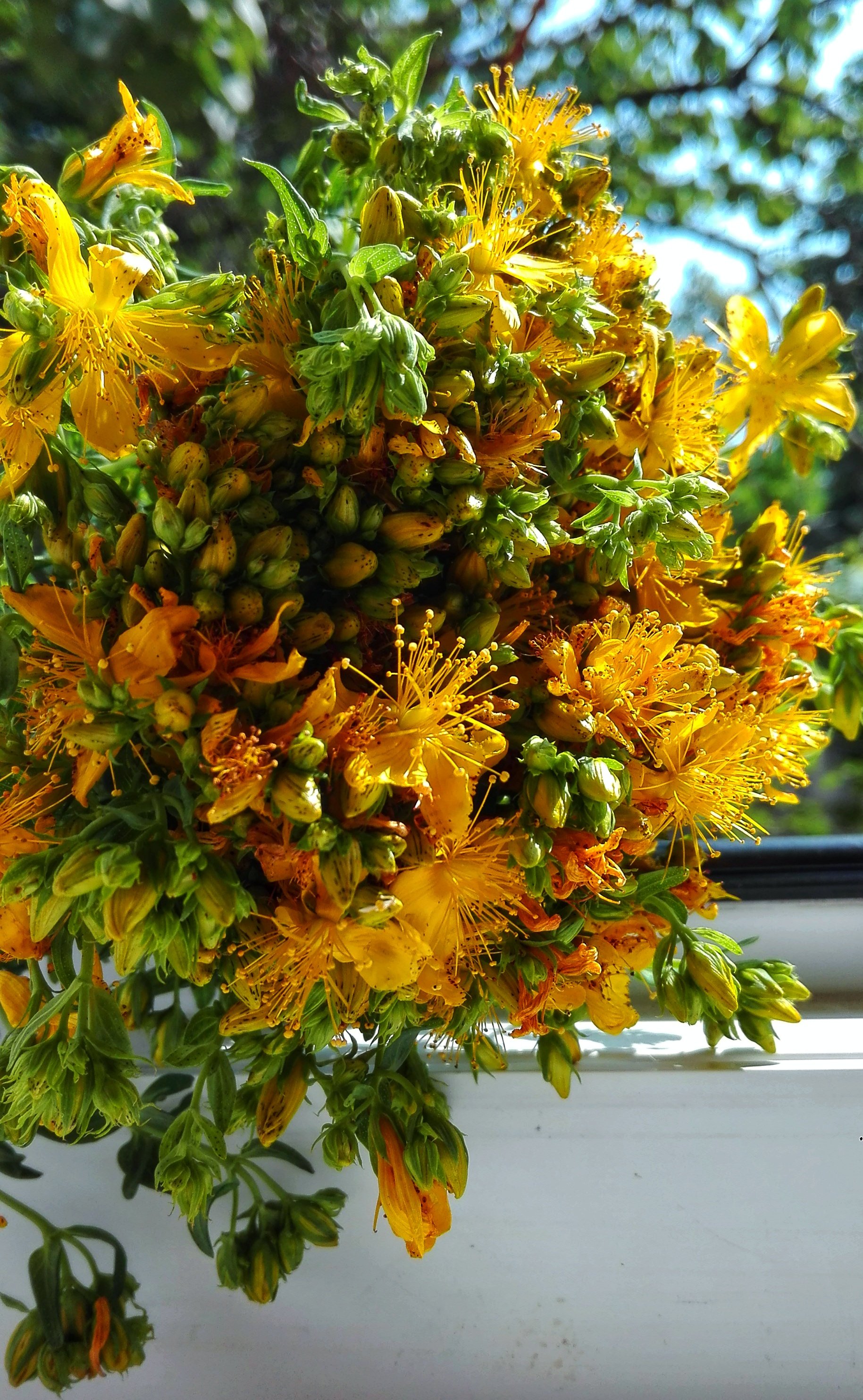Common St. John's Wort (Hypericum perforatum) is a flowering plant from Hypericaceae family. It is known as common St. John's wort, perforate St. John's wort and St. John's wort. The Romanian folk calls it sunatoare or pojarnita.
Hypericum perforatum is native to parts of Europe and Asia but has spread to temperate regions worldwide being considered an invasive weed. The common name was inspired by its traditional flowering and harvesting on June 24th, St. John's day. It is believe that hanging these plants over religious icons in the home during St John's Day they will ward off evil (hyper means above in Greek and eikon means picture).

| Camera | Huawei P8 smartphone |
|---|---|
| Settings | f: 2,0, ISO 100, S 1/848s, focal length: 27mm |
| Edited | Snapseed |

Perforate St John's wort is a herbaceous perennial plant with extensive, creeping rhizomes. Its stems are erect, branched in the upper section, and can grow up to 1 m high. It has opposite, stalkless, narrow, oblong leaves that are 1–2 cm long. The leaves are yellow-green in color, with scattered translucent dots of glandular tissue. The dots are conspicuous when held up to the light, giving the leaves the perforated appearance to which the plant's Latin name refers. The flowers have five petals, and are colored bright yellow with conspicuous black dots.


| Camera | Huawei P8 smartphone |
|---|---|
| Settings | f: 2,0, ISO 100, S 1/865s, focal length: 27mm |
| Edited | Snapseed |

Common St. John's wort has long been used in herbalism and it is believed to have medicinal properties. Especially the red oily extract from this plant was (and still is) used in healing the burns.
Even if this plant is widely known for its anti-depressive properties, the herbalists believe it can heal up to 100 diseases. The main actions of the plant are: astringent, analgesic, anti-inflammatory, antidepressant, antispasmodic, antiviral, antibacterial, antidiarrheal, antitumor, restorative tonic for the nervous system, sedative, stimulates bile flow.
Despite the extensive list of benefits, some precautions are required. Using the plant in excess might cause some issues like skin and eyes sensitivity to the sun light, it might interact with a range of medicines and it is definitely not recommended to pregnant women.


| Camera | Huawei P8 smartphone |
|---|---|
| Settings | f: 2,0, ISO 100, S 1/627s, focal length: 27mm |
| Edited | Snapseed |

Before ending this article, I will share with you a recipe for St. John's wort homemade oil. This was tested by me and my family and I can assure you it works (and no risks either).
Fill a jar with minced St. John's wort, without pressing it. Pour sun flower oil until the jar is full (olive oil works too) then close it. The jar will be placed in a sunny warm place and left for two weeks. After this period of time, remove the plant and filter the oil. You should have a red colored oil which can be used in case of burns, skin rashes or mild injuries. This recipe was passed to me by my grandma and its been used in our family by every generation.

Sources for the article: verywellmind.com, cloverleaffarmherbs.com, sciencedirect.com, and, obviously, wikipedia.org.

This is my entry WorldWildFlora contest. If you like and find this article useful, feel free to upvote and resteem it. Don't forget to

